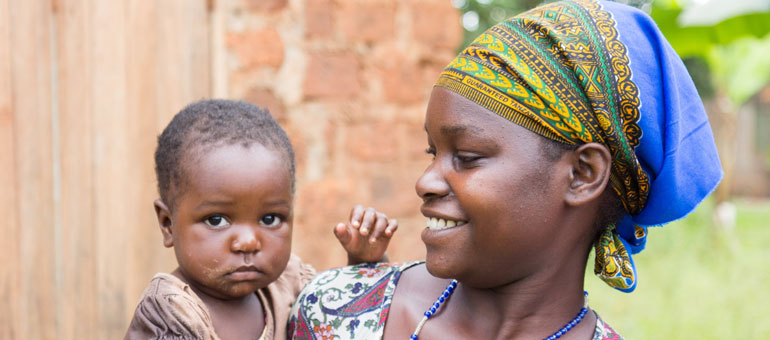Poor quality diets for young children after they stop exclusive breastfeeding is a major nutrition challenge in many countries. If the complementary foods provided to young children lack essential proteins, vitamins and minerals, it can hinder growth and development and make them vulnerable to illnesses.
GAIN is working with UNICEF in Eastern and Southern Africa to sharpen understanding of and improve complementary feeding in the region. The UNICEF-led project is called RISING - Regional Initiatives for Sustained Nutrition and Growth - and aims to inform regional and national policies and programmes to tackle this issue.
Today, we have launched 12 short reports that contribute to this project. The reports reflect a series of analyses on complementary feeding for children between six months and two years of age, when additional foods beyond breast milk are required for proper growth and development. We assessed two key aspects of complementary feeding - nutrient gaps and affordability of nutritious foods to fill them - in Ethiopia, Mozambique, South Africa, Tanzania, Uganda and Zambia, producing a brief report on each aspect.
What did we find?
Based on available evidence, the most important micronutrients lacking in young children’s diets in the region are iron, vitamin A, calcium and zinc, and in some cases iodine, vitamin B12 and folate. These deficiencies can lead to a host of health problems, including impaired development and increased risk of diarrhoea, infection and death. They are especially important for young children who are rapidly growing and developing and thus require nutrient-dense foods, including those from animal sources.

Poor quality diets for young children after they stop exclusive breastfeeding is a major nutrition challenge in many countries. ©Shutterstock/GAIN
The best natural food sources to combat micronutrient deficiencies in the region are offal meat (e.g. chicken and beef liver), small dried fish (including the bones), dark green leafy vegetables (e.g. chard, spinach and kale) and beef (or other red meat), and to some extent, dairy and orange or yellow vegetables (e.g. carrots, pumpkin and orange-fleshed sweet potato).
But we also found that these foods are often unaffordable. The most affordable sources of nutrients of concern are dark green leafy vegetables and dried beans, peas or lentils, followed by small dried fish, beef liver, chicken liver, beef, dairy and orange or yellow vegetables. However, with the exception of food sources of vitamin A, which appear affordable across the region, even the most affordable sources of nutrients of concern are unaffordable to the poorest 20–30% of the population. Affordability is thus one of the major barriers to improved complementary feeding in the region, and efforts are needed to raise incomes as well as lower prices and promote home production of nutritious foods.
Biofortification, fortification and supplementation can also help fill nutrient gaps, particularly where food insecurity, social norms and taste preferences make it challenging for young children to obtain the necessary nutrients from natural foods.
These highlighted findings are generalisations across the region, and there is of course variability between countries. For example, iron does not appear to be a nutrient of concern in South Africa, and vitamin A no longer appears to be a nutrient of concern in Uganda. Additionally, food sources of iron are relatively affordable in Ethiopia and Uganda but less affordable in Mozambique and Zambia. And food sources of calcium are relatively affordable in Uganda but less affordable in South Africa.
For more detailed overviews of the findings in specific countries, download the reports below.